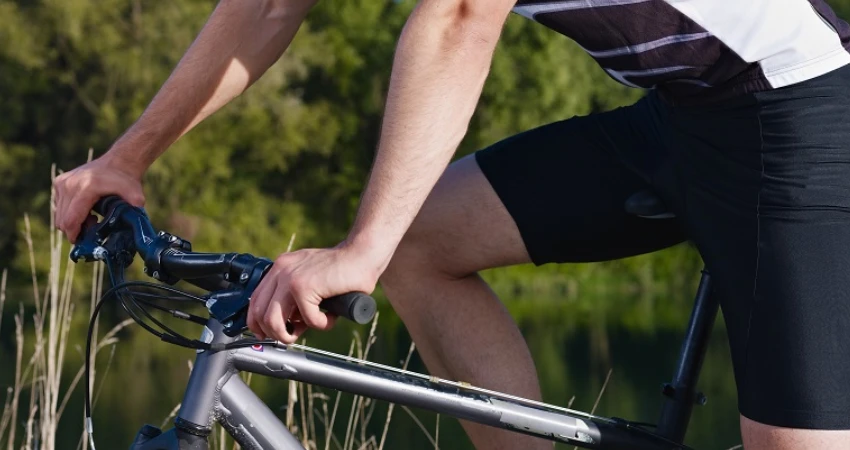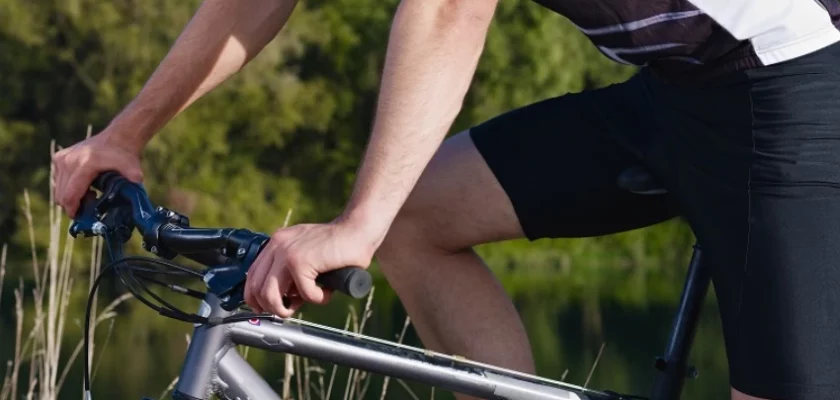Have you ever wondered how to measure seatpost setback? If you’re a cycling enthusiast or a bike mechanic, understanding the concept of seatpost setback is crucial. It plays a significant role in achieving proper bike fit and maximizing comfort and performance during rides.
In this blog article, we will delve into the world of seatpost setback and provide you with a step-by-step guide on how to measure it accurately.
So, whether you’re setting up a new bike or looking to make adjustments to your current one, this article will equip you with the knowledge you need to get the perfect fit. Let’s dive right in!
Seatpost Setback: How To Measure For Perfect Fit

Understanding the importance of proper bike fit is crucial for a comfortable and efficient ride. One often overlooked factor in achieving an optimal bike fit is the seatpost setback. The setback refers to the horizontal distance between the seatpost clamp and the center of the saddle rails.
Why Does Seatpost Setback Matter?
The seatpost setback plays a significant role in determining your riding position on the bike. It affects your weight distribution, comfort, and overall stability. Here are some key reasons why seatpost setback matters:
1. Rider Comfort: The setback helps in finding the right balance between your weight distribution on the front and rear wheels. It allows you to achieve a comfortable position that minimizes strain on your lower back.
2. Efficient Pedaling: A proper seatpost setback ensures that your legs can generate power efficiently by enabling a proper pedaling motion. It helps you achieve optimal knee alignment and reduces the risk of knee injuries.
3. Bike Handling: The setback affects the weight distribution on the bike. A balance between front and rear weight distribution is crucial for stability, especially when descending or maneuvering around corners.
Measuring Seatpost Setback: Step-by-Step Guide
Now that we understand the importance of seatpost setback, let’s dive into the process of measuring it accurately. Follow these step-by-step instructions to measure the setback on your bike:
Step 1: Gather the Tools
Before you start measuring, make sure you have the following tools:
- Tape measure or ruler
- Calipers (optional, for precise measurements)
- Level
- Allen wrench (size appropriate for your seatpost clamp)
Step 2: Position Your Bike
Place your bike on a stable surface or use a bike stand to hold it upright. Ensure that the bike is level and not leaning to either side.
Step 3: Measure the Saddle Position
Using a tape measure or ruler, measure and note down the distance between the center of the saddle rails and the center of the bike’s bottom bracket. This measurement will serve as a reference point.
Step 4: Measure the Distance
Using the tape measure or a caliper, measure the horizontal distance between the center of the seatpost clamp and the center of the saddle rails. Make sure the tape measure or caliper is parallel to the ground for accurate measurements.
Step 5: Calculate the Setback
Subtract the distance obtained in step 4 from the distance obtained in step 3 (saddle position measurement). The result is the seatpost setback of your bike.
Determining the Correct Seatpost Setback
Now that you know how to measure the seatpost setback, you may wonder how to determine the correct setback for your bike. While professional bike fitting can provide precise recommendations tailored to your body and riding style, you can start with these general guidelines:
1. Experience Level: Beginners or riders who prioritize comfort should aim for a more upright position with a smaller setback. Advanced riders or those focused on aerodynamics and power transfer might prefer a more aggressive position with a larger setback.
2. Flexibility: Your flexibility plays a crucial role in determining the setback. Riders with limited flexibility might benefit from a smaller setback to reduce strain on the lower back. More flexible riders can experiment with a larger setback for improved aerodynamics and power output.
3. Riding Style: The type of cycling you primarily engage in can influence the ideal setback. For example, road cyclists often prefer a slightly larger setback for comfort during long rides, while triathletes and time trialists may opt for a smaller setback to achieve a more aerodynamic position.
4. Comfort and Efficiency: Ultimately, finding the right setback is an individual preference that balances comfort and efficiency. It’s essential to experiment and make small adjustments to find what works best for your body and riding style.
Troubleshooting Seatpost Setback Issues
Sometimes, you may encounter issues with seatpost setback that require further adjustment. Here are a few common problems and solutions:
1. Knee Discomfort: If you experience knee pain or discomfort, it may indicate an incorrect seatpost setback. A seatpost moved too far forward can strain the knees, while too far back can put excessive pressure on the quadriceps. Adjust the setback slightly to find a more comfortable position.
2. Back Pain: Lower back pain can be a sign of an incorrect setback. Experiment with different setback positions to relieve the strain on your lower back and achieve a more comfortable riding position.
3. Handling Issues: If your bike feels unstable or difficult to control, the setback might be a contributing factor. Consider adjusting the setback to achieve better weight distribution and improved bike handling.
Frequently Asked Questions
1. What tools do I need to measure seatpost setback?
You’ll need a measuring tape or ruler, a level, a marker or tape, and a second person to hold the bike steady.
2. How do I measure seatpost setback on my bike?
Measure the horizontal distance from the center of the saddle rails to an imaginary vertical line that passes through the bottom bracket.
3. What is a recommended setback range for seatposts?
The setback range can vary depending on personal preference, bike geometry, and riding style. Generally, setbacks between 20-40mm are common.
4. Can I adjust seatpost setback on my bike?
Yes, if your seatpost allows for it. Some seatposts have adjustable heads that allow you to change the setback by loosening and repositioning the saddle rails.
5. Why is it important to measure seatpost setback correctly?
Proper seatpost setback affects your bike’s handling, comfort, and power transfer. Measuring it accurately ensures an optimal riding position and helps prevent discomfort and injuries.
Final Thoughts
In conclusion, understanding how to measure seatpost setback is crucial for achieving optimal bike fit and comfort. By following a few simple steps, cyclists can accurately determine the setback distance of their seatpost.
This measurement plays a significant role in finding the ideal riding position, avoiding discomfort and potential injuries. Whether you prefer a DIY approach or seeking professional assistance, measuring your seatpost setback ensures an enjoyable and efficient cycling experience.
So, take the time to measure your seatpost setback correctly to enhance your riding performance and prevent any discomfort along the way.

